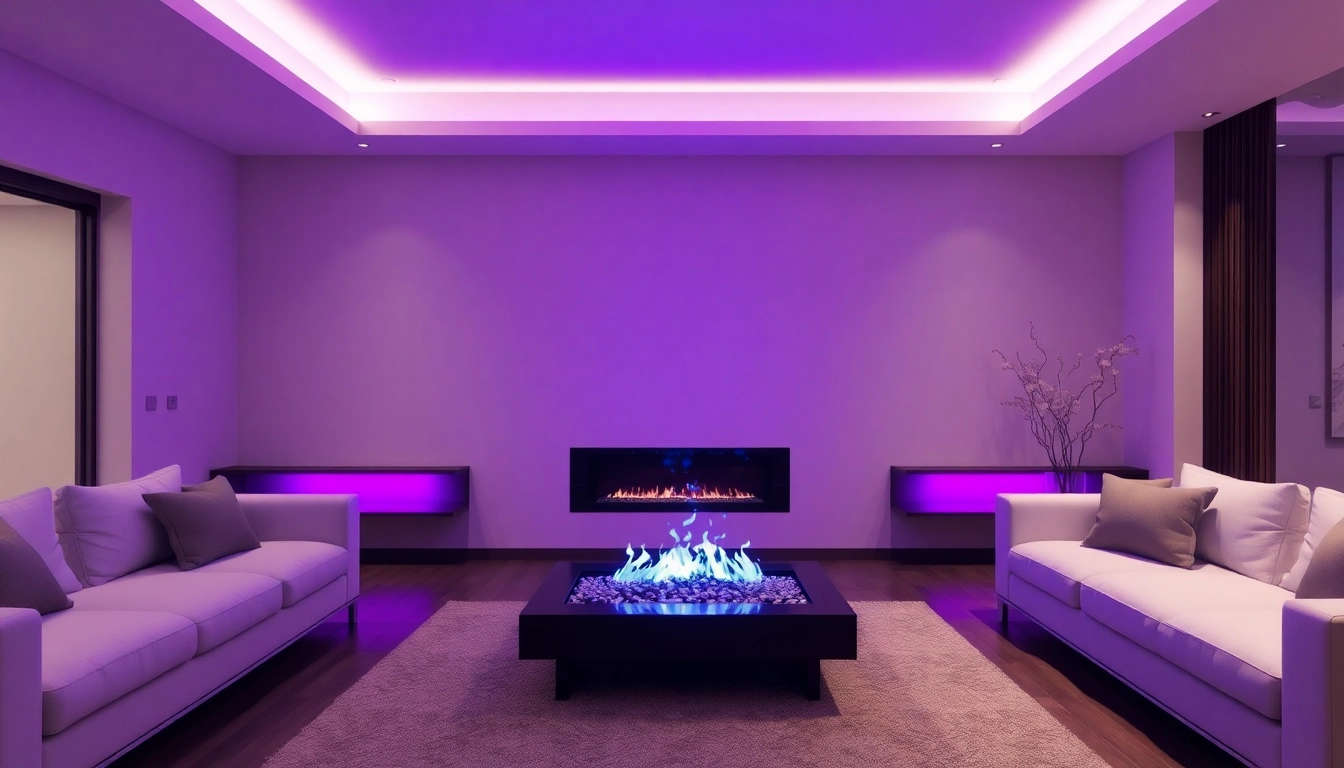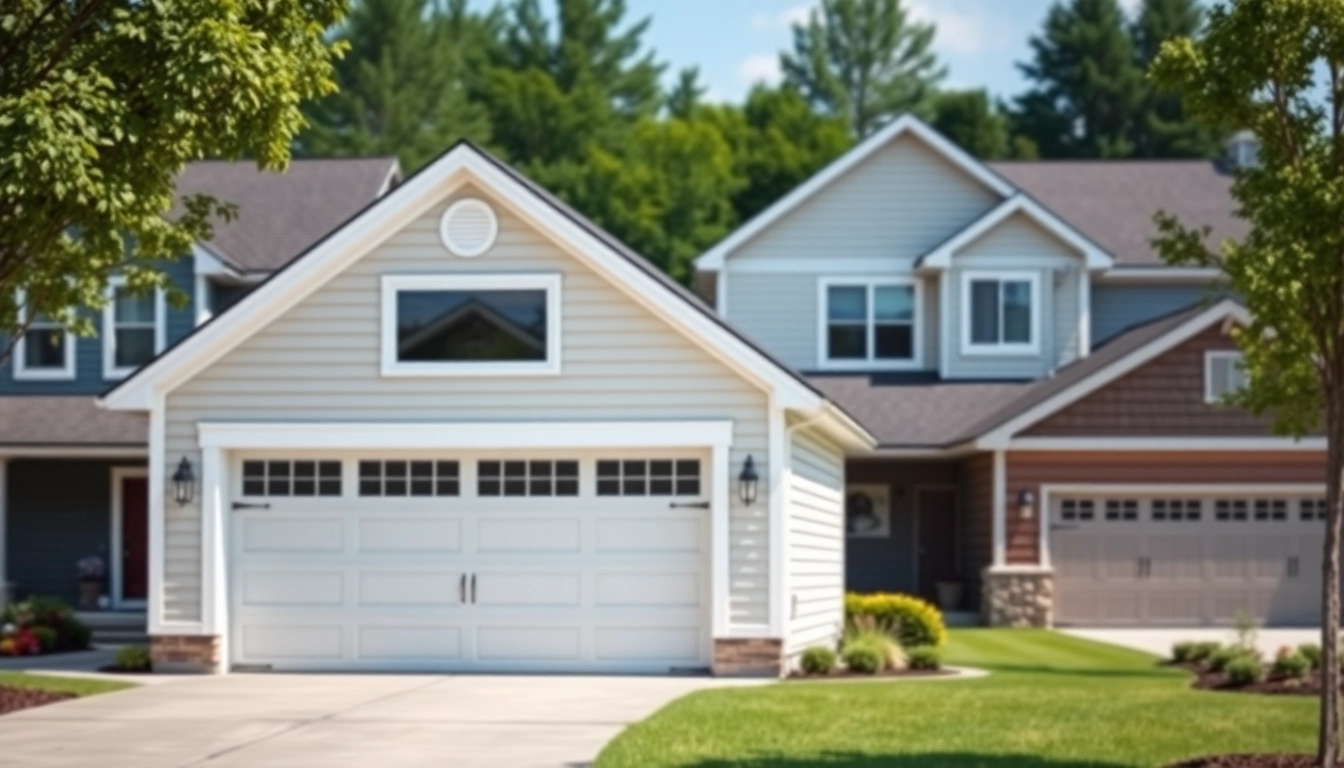Understanding Water Vapor Fireplaces
What is a Water Vapor Fireplace?
A water vapor fireplace is an innovative electric fireplace that utilizes ultrasonic technology to produce a realistic flame-like illusion from water vapor. Unlike traditional fireplaces that burn wood or gas, water vapor fireplaces create a 3D visual effect that closely resembles real flames without generating any actual heat. This technology not only provides visual ambiance but also ensures the safety and comfort of household environments, making it an ideal choice for homes with children and pets.
How Does It Work?
The operation of water vapor fireplaces is fascinating and involves several key components. When activated, an ultrasonic transducer emits high-frequency sound waves, causing water from the reservoir to agitate and form fine droplets. These tiny water droplets are then illuminated by LED lights, creating a stunning visual effect that mimics the appearance of dancing flames.
Importantly, because the vapor is cool to the touch, there’s no risk of burns, making these fireplaces safe for indoor use. Additionally, the incorporation of advanced features such as remote controls, adjustable brightness, and various flame color options allows users to customize their fireplace experience to suit their mood or decor.
Benefits of Choosing a Water Vapor Fireplace
Water vapor fireplaces offer a myriad of benefits that appeal to both aesthetic desires and practical needs. Here are some of the key advantages:
- Safety: The absence of real flames eliminates the risks associated with traditional fireplaces, such as accidental fires and burns.
- Air Quality: Since they do not produce smoke or harmful emissions, water vapor fireplaces contribute to better indoor air quality.
- Ease of Installation: These fireplaces typically require less installation effort compared to traditional options, as they do not need chimneys or venting systems.
- Energy Efficiency: Many models use less electricity than conventional heating methods, offering an environmentally friendly option for ambiance without high energy costs.
- Customizability: With various designs, styles, and color options, homeowners can tailor the fireplace to fit into any interior decor scheme effortlessly.
Installation Considerations for Water Vapor Fireplaces
Preparing Your Space
Before installing a water vapor fireplace, it’s crucial to assess and prepare the designated space. Considerations such as available electrical outlets, proximity to water sources, and aesthetic preferences should all be taken into account. Popular placements include:
- Living Areas: Enhances the ambience of a family room or lounge.
- Bedrooms: Adds a tranquil element conducive to relaxation.
- Commercial Spaces: Provides an inviting atmosphere in restaurants and hotels.
Electrical Requirements
Water vapor fireplaces generally require a standard electrical outlet, typically 120V. Ensure that electrical wiring is up to code, and if the fireplace is large or demands higher power, consult a professional to verify if an upgraded circuit may be necessary. Additional settings such as timers and remote functions may also require specific electrical considerations that should be discussed prior to the purchase.
Maintenance and Care
Maintaining a water vapor fireplace is straightforward but essential for optimal performance. Regular care includes:
- Water Levels: Keep the water reservoir filled to prevent the unit from shutting down; some models include automatic shut-off features when water levels are low.
- Cleaning: Mist accumulation can lead to deposits; clean the reservoir and ultrasonic components every few weeks to maintain clarity and performance.
- Inspecting for Leaks: Periodically check connections for any leaks or wear, ensuring long-term functionality.
Comparing Water Vapor Fireplaces to Traditional Options
Heat Output and Efficiency
When comparing water vapor fireplaces to traditional heating options, the primary distinction lies in heat output. Traditional fireplaces can provide substantial heat, which is ideal for warming spaces, while water vapor fireplaces are primarily decorative and do not generate heat. However, their energy usage is typically lower than that of gas or wood-burning models, making them a cost-effective choice for ambiance without the need for heating in moderate climates.
Safety Features
Safety is a significant consideration in home heating solutions. Water vapor fireplaces excel in safety features, with no real flame, soot, or emissions, significantly reducing fire hazard risks. This makes them suitable for families with children or pets, while traditional fireplaces pose greater risks of burns and accidental fires.
Environmental Impact
Water vapor fireplaces are more environmentally friendly than traditional fireplaces because they produce zero emissions and do not require fossil fuels or wood, promoting a more sustainable approach to home heating and decor. Accordingly, they align with increasing environmental awareness among consumers.
Popular Styles of Water Vapor Fireplaces
Wall-Mounted Units
Wall-mounted water vapor fireplaces are ideal for those looking to save space while adding a stylish touch. These units can be installed at various heights, allowing customization according to the room’s design. Their mounting on walls lends a modern aesthetic while conserving floor space.
Free-Standing Models
Free-standing models offer versatility for placement in any area of the home. These fireplaces can be moved easily, providing flexibility in arrangement. They are often available in various designs, ranging from minimalist to ornate, making them an attractive focal point in any room.
Custom Installations
For those desiring a unique look, custom installations of water vapor fireplaces can cater to specific design preferences and space constraints. These might involve integrating the fireplace into existing architectural features, including cabinetry, or creating a bespoke fireplace feature that becomes the centerpiece of a room.
Customer Insights and Reviews
Real User Experiences
Consumer feedback on water vapor fireplaces generally highlights their effectiveness in providing a visual flame without the risks associated with traditional fireplaces. Many users appreciate the ambiance they create in living rooms, as well as their utility in commercial settings where safety is paramount.
Reviewers often cite the ease of installation and the low maintenance required compared to traditional fireplaces. However, some users do mention that while they enjoy the aesthetic, the lack of heat may not suit every customer’s needs.
Common Questions and Concerns
Prospective buyers frequently ask about the feasibility of maintaining the humidity levels produced by water vapor fireplaces. Concerns around moisture accumulation and potential impacts on air quality can arise, especially in small or poorly ventilated spaces. It’s valuable for customers to consider their home’s environment and possibly consult an expert before installation.
Expert Recommendations
Experts recommend evaluating the specific needs of your space before selecting a water vapor fireplace. They often advise choosing models with adjustable settings for both flame appearance and intensity, enabling users to tailor their experience. Furthermore, seeking out reputable brands that provide robust customer support and clear installation guidelines can enhance customer satisfaction.


